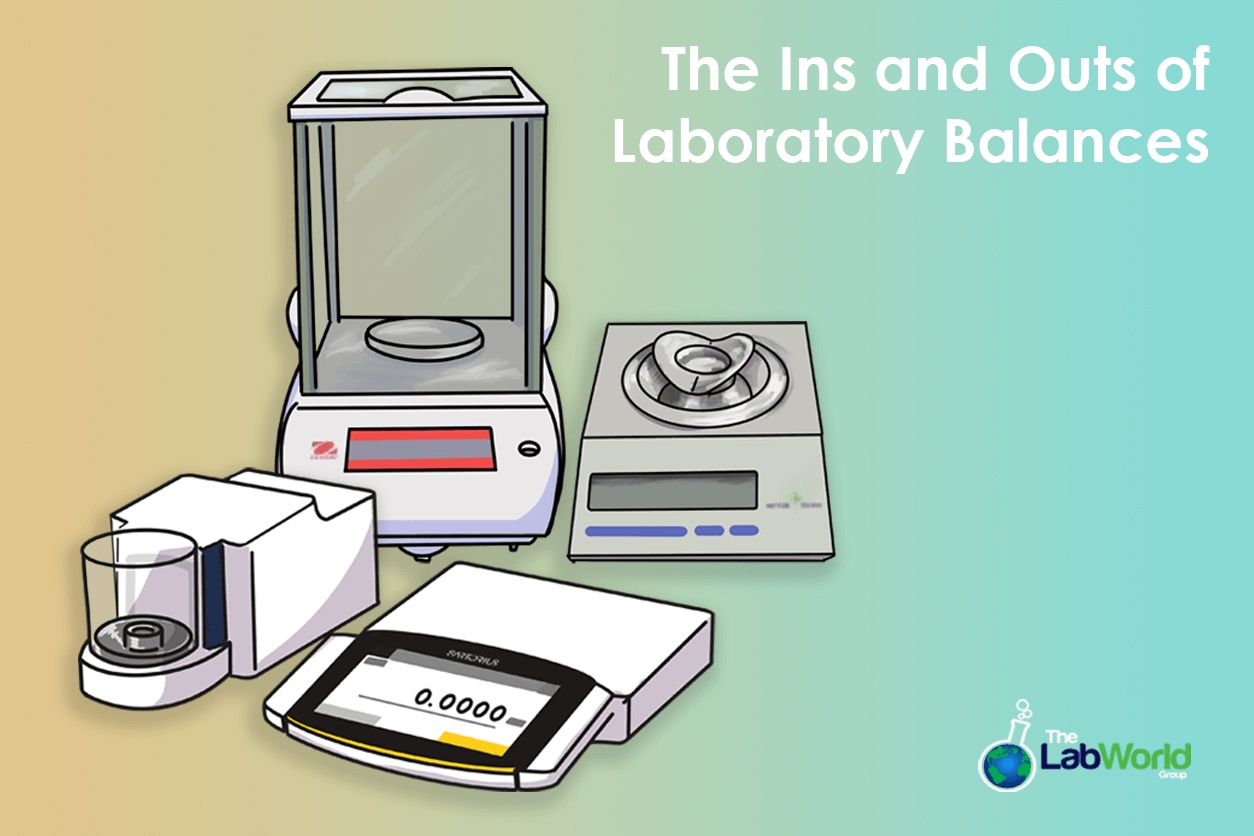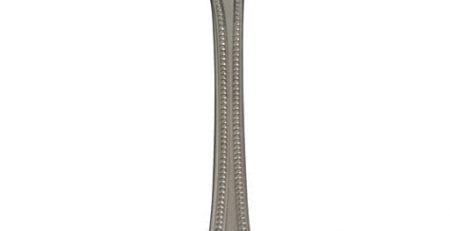
A Guide to Laboratory Balances
Amanda2022-11-14T14:10:10+00:00A brief history of lab balances
When we think of balances and scales, we probably envision an equal arm balance. This simple two-pan machine is not only iconographic for justice, equilibrium and measurement, but it’s also ancient. The earliest recorded uses date back to Egypt at about 5000 BC. A more modern version came about in the mid18th century, featuring a rigid beam set on a knife-edged fulcrum. To avoid the impact of air current and ambient conditions, this was set inside a glass cabinet. This design and versions thereof were the pillars of laboratories for 200 years. Around 1950 however, the more familiar single-pan design single pan arrived on the scene.
What are balances in the laboratory?
A lab balance in its most basic function is there to determine the mass of an object. From that key function however radiates out varying degrees of precision, accuracy, accommodations for what and how much of material needs weighing, and functions to help break down the data. Powders, for example, can vary greatly in density, and composition, sometimes they can be electrostatically charged. In this case, the use of a dispensing apparatus in a closed system can greatly increase the accuracy as well as safety and reduce the minimum amount of sample needed.
Most modern analytical and top-loading balances use digital displays and varying levels of features. Some of these features can look like several weighing units, reading out in not only metric, but also Imperial, and regional units like Japanese Taels. Lab Balances also often feature special modes that help accurately determine measurements beyond simply the mass like dynamic weigh modes for shifting items, counting functions to help speed up tallying high volumes of identical parts, and percent weighing to determine what the portion of a solid is in relation to the reference weight.
What are the kinds of laboratory balances?
Laboratory balances come in several varieties, each with its use case and level of accuracy. Knowing what you’re going to be weighing determines the type you should be looking for. The smallest samples are measured on an ultra micro balance, used most often with filters to determine what particles are left behind. These measure down to 0.1 μg.
Microbalance and Semi microbalances employ vibration isolating systems and are highly sensitive to environmental shifts so are usually used within a hood or enclosure. Analytical Balances determine mass down to the 0.01 mg level and are ideal for arenas that rely on quantitative chemical analysis such as pharmaceutical, plastics, manufacturing, calibration labs, and the food industry. Top Loading and Precision balances allow for higher capacity weighing with greater speed and are ideal for situations where high precision isn’t as much of a requirement day to day.
A moisture balance or moisture analyzer helps to determine the moisture content of a sample, weighing before and after a sample is dried out, and can dramatically shorten a workflow, taking a moisture determination test down to a few minutes instead of hours.
What are the parts of a laboratory balance?
Most benchtop digital lab balances have uniform features. They’re often more square in construction, with a single pan design with a digital display in the front. The weigh pan will vary depending on the type and capacity of the balance it’s attached to. A microbalance for example will have small weight pans, proportional to the small samples being measured, but also to reduce the opportunity for other particles to settle and be counted. A high capacity top loading balance however may have a large platform in comparison, built to accommodate large objects or animals, and will sometimes feature displays that are removable or set on a stand behind the platform.
Draft shields in a laboratory balance help to minimize turbulence which can be handy when weighing powders and light items. Lab balances can also run the gamut of power options from 12V DC adapters, to batter operation for portability to 120V power cables and locking mechanisms for when they need to stay put.
Maintaining your balance
When it comes to operating your balance, location and ambient conditions can sometimes present a challenge to collecting accurate data. For one, your lab’s geographical location, specifically its relation to the sea level can impact the gravitation force your sample exerts. Temperature can also impact measurements, that’s why it is important to allow the scale to warm up before use and to calibrate your lab scale regularly. Some balances have internal methods for calibration and compensating for environmental factors, but using a known weight within the scale’s capacity will take care of the job.
Lab Balance Manufacturers
Through the years we’ve carried multiple lab balance manufacturers. Each has a broad selection of features and benefits, innovations, capacities, and price points to cover just about any use case.
Mettler Toledo focuses just on lab balances, serving industries from Chemical Processing, Food, and Beverage, Raw Materials and Jewelry, all the way to transportation and logistics. You may have seen their package scales at the post office. Their high-end construction, excellent reliability, and ease of use make them one of the more popular producers on the market.
Another balance manufacturer with proven dependability is Ohaus, headquartered in New Jersey. Their lab balances such as their flagship Explorer Line feature bright easy to ready displays, robust weigh modes, and a broad range of capacities. The Ohaus balance lineup covers not only analytical, precision, and portable lab balances, but also moisture analyzers, industrial scales, and calibration weights.
Sartorius Balances are built with the idea of customization in mind and nifty features such as detachable displays. The Sartorius lab balance line includes ultra micro balances and balances that tout high-tech features such as touch-free control draft shield control and automatic leveling for high-performance accuracy and precision.
Other Laboratory Manufacturers include offerings from Shimadzu, a leader in scientific equipment. Their lab balance lineup includes multiple analytical balances, moisture analyzers, and a hand anti-stactic devise to help prepare powders for processing. A&D balances are also a steadfast producer of not only lab scales, but also more specialized tools such as mass comparators, check weighers, counting scales, balances legal for trade, and explosion-proof scales for hazardous materials.
Final Thoughts
The field of lab balances seems straightforward enough but as you look closers, there are many divisions and sub-divisions to the field that allow users to focus on the features they need the most. Over the years we’ve carried many balances from ultra micro to platform floor scales, and each that comes through has a lot to offer.
Every balance that comes through our doors is tested and verified with our know weights, so if it makes it to the website, you know it’s performing to standard. Our inventory of lab scales is also always changing, so if there’s a specific need you may not see a solution for, let us know we can help. We’re here to get the instrument that fits your need and your price point. Buying a gently used balance is also a great way to get more for your money. Contact us today to find out how we can help.













